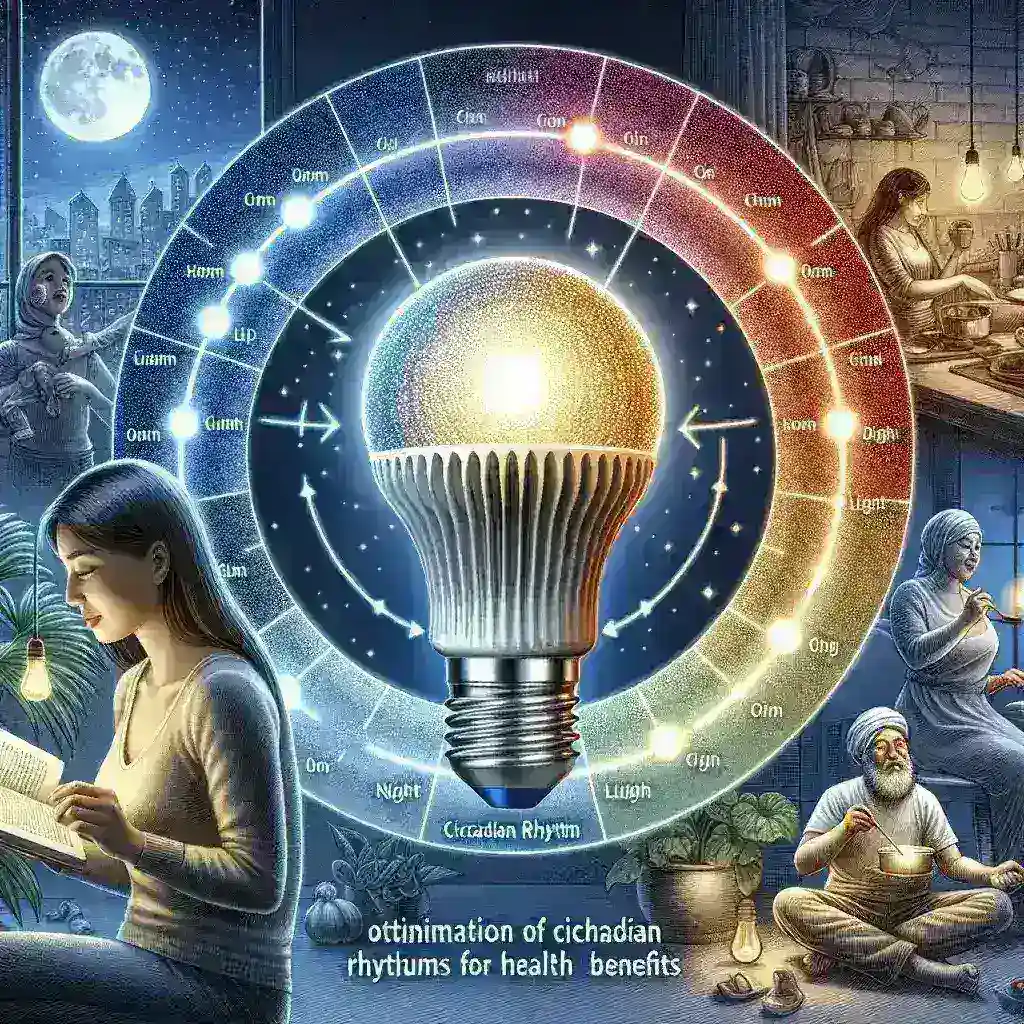
Introduction
In today’s fast-paced world, where artificial light dominates our lives, the significance of natural light and its effects on our health is more crucial than ever. Smart lighting systems have emerged as a cutting-edge solution that not only illuminates our spaces but also optimizes our circadian rhythms for better health and well-being. This article delves into the intricate relationship between smart lighting systems and circadian rhythm optimization, highlighting their importance, benefits, and future potential in promoting a healthier lifestyle.
Understanding Circadian Rhythms
Circadian rhythms are biological processes that follow a roughly 24-hour cycle, regulating various physiological functions such as sleep-wake patterns, hormone release, and metabolism. These rhythms are influenced by external cues, particularly light, which plays a pivotal role in signaling when to sleep and when to be awake. Disruptions to circadian rhythms can lead to various health issues, including sleep disorders, mood swings, and even chronic diseases.
The Role of Light in Circadian Rhythms
Light exposure, especially blue light emitted by the sun, is crucial for regulating circadian rhythms. During the day, exposure to natural light helps maintain alertness and boosts mood. Conversely, exposure to artificial light, particularly in the evening, can interfere with melatonin production, the hormone responsible for sleep. This disruption can lead to poor sleep quality, which in turn affects overall health.
What Are Smart Lighting Systems?
Smart lighting systems are advanced lighting solutions that can be controlled remotely and programmed to adapt to specific needs and preferences. These systems utilize technologies such as LEDs, sensors, and smart home integration to optimize lighting conditions. By adjusting brightness, color temperature, and timing, smart lighting can mimic natural light patterns, promoting a healthier living environment.
How Smart Lighting Systems Optimize Circadian Rhythms
- Dynamic Lighting Adjustments: Smart lighting systems can automatically adjust brightness and color temperature throughout the day. For example, they can provide bright, cool light during the daytime to enhance alertness and switch to warmer tones in the evening to create a calming atmosphere conducive to sleep.
- Personalized Lighting Schedules: Many smart lighting systems allow users to create customized lighting schedules based on their daily routines. This ensures that lighting conditions align with individual circadian rhythms, promoting better sleep and productivity.
- Integration with Smart Home Devices: Smart lighting can be integrated with other smart home devices, such as smart thermostats and sleep trackers, to create a cohesive environment that supports overall health and well-being.
Benefits of Circadian Rhythm Optimization for Health
Integrating circadian rhythm optimization through smart lighting systems offers a multitude of health benefits:
1. Improved Sleep Quality
By mimicking natural light patterns, smart lighting can improve sleep quality. Users can experience better sleep onset and duration, leading to enhanced overall health.
2. Enhanced Mood and Productivity
Optimal lighting conditions can boost mood and cognitive function. Studies have shown that exposure to natural light during the day enhances productivity levels and reduces symptoms of depression.
3. Reduced Risk of Chronic Diseases
Proper circadian rhythm regulation can lower the risk of chronic conditions such as obesity, diabetes, and cardiovascular diseases, which are linked to sleep disturbances.
4. Increased Energy Levels
Smart lighting that aligns with the body’s natural rhythms can help maintain energy levels throughout the day, preventing the mid-afternoon slump.
Challenges and Considerations
While smart lighting systems offer numerous advantages, there are challenges and considerations to keep in mind:
1. Initial Cost
The initial investment in smart lighting technology can be higher than traditional lighting. However, long-term energy savings and health benefits often outweigh these costs.
2. Technological Dependence
Smart lighting systems rely on technology, which may pose challenges for individuals who are not tech-savvy or those who prefer simpler solutions.
3. Privacy Concerns
As smart lighting systems often collect data for optimization purposes, privacy concerns may arise regarding data security and usage.
Future Outlook: The Evolution of Smart Lighting Systems
The future of smart lighting systems is promising, with advancements in technology poised to enhance their effectiveness in circadian rhythm optimization:
1. AI and Machine Learning Integration
As artificial intelligence (AI) and machine learning continue to evolve, smart lighting systems will become increasingly personalized, adapting to individual preferences and lifestyles.
2. Greater Emphasis on Health and Wellness
With the growing awareness of health and wellness, more consumers will likely seek smart lighting solutions that prioritize circadian rhythm optimization, leading to increased demand and innovation.
3. Integration with Wearable Technology
Future smart lighting systems may integrate seamlessly with wearable technologies, allowing for real-time adjustments based on individual physiological signals.
Conclusion
Smart lighting systems present a revolutionary approach to enhancing health through circadian rhythm optimization. By understanding the intricate connection between light and our biological processes, we can leverage technology to create a healthier, more balanced lifestyle. As we continue to innovate and embrace these advanced solutions, the potential for improved well-being and productivity is immense. Investing in smart lighting is not just a step toward modern living; it is a commitment to prioritizing our health in an ever-evolving world.
Leave a Reply